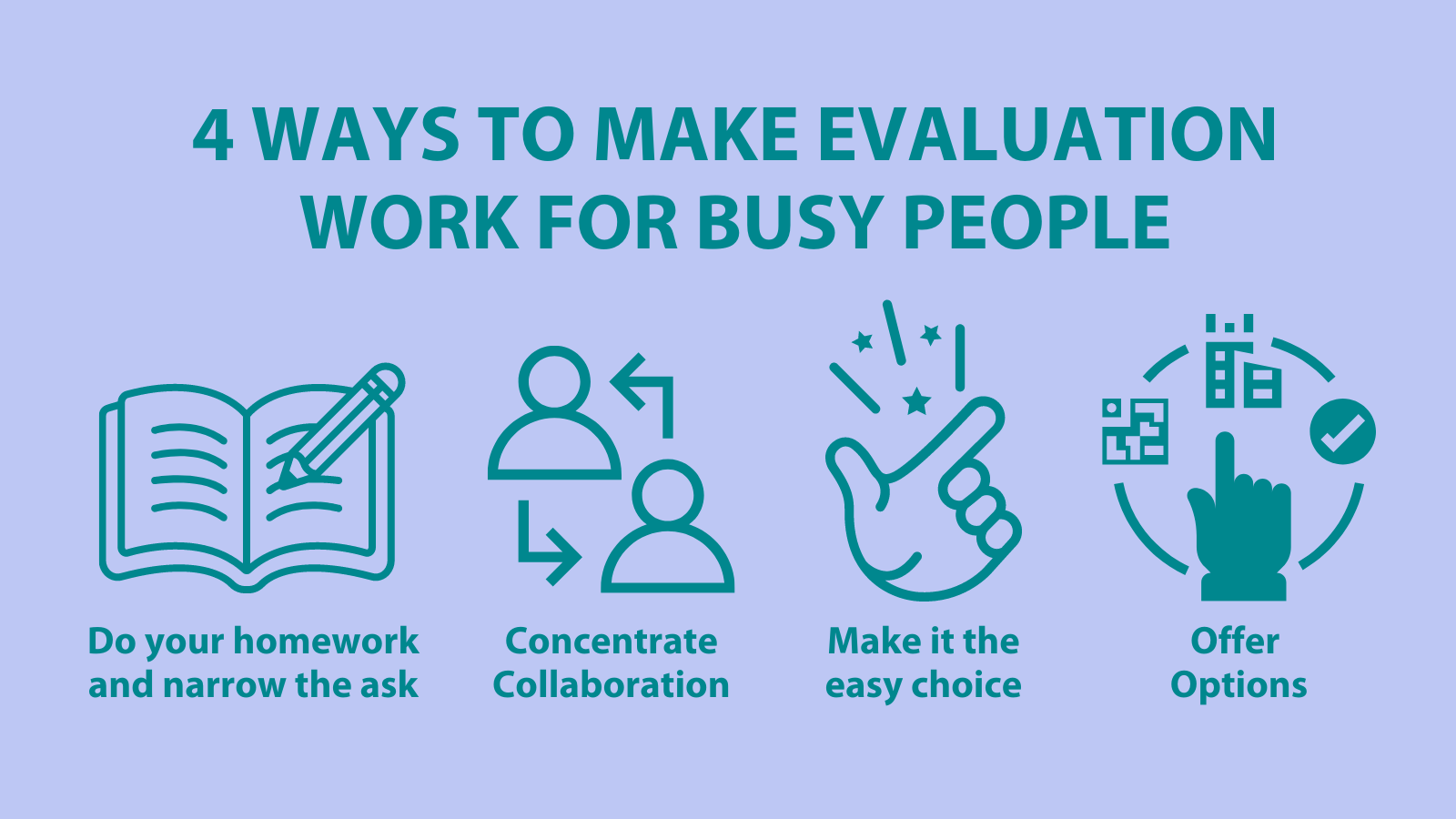
Over the past year, many of us have been busier than ever. A lack of time is not a new barrier to evaluation, so we wanted to share some ever-helpful strategies to make evaluation realistic for clients and their stakeholders to participate. They might be helpful for anyone working to fit evaluation into busy schedules.
- Do your homework and narrow the ask. As external evaluators, we read up on clients and their work before we begin working with them. This gives us background knowledge so we can hit the ground running—and not waste clients’ or stakeholders’ time by asking them questions that could be answered by available materials.
- Make it the easy choice. Rather than making evaluation participation its own task on top of everything else, fit it into what people are already doing. Add quick evaluation tasks to existing meeting agendas or build survey links into webpages people check frequently. For example, we are trying to make participation realistic for child welfare workers in a study we’re conducting for the Minnesota Department of Human Services. We will use workers’ input to understand current workloads and then design an improved system for monitoring case- and workloads. As one outreach strategy, we partnered with a well-connected network, the Minnesota Association of County Social Service Administrators, to join one of their existing meetings to get in front of caseworker supervisors.
- Concentrate collaboration. By designing our work around key milestone meetings, we can make the most of a few in-depth meetings with clients, rather than sending many emails and having frequent ad hoc calls. Similarly, sometimes we invite clients to designate a liaison who serves as our main contact. This person helps us understand how to best engage broader stakeholders as needed, such as when to schedule meetings to maximize participation.
- Offer options. We offer options for how to engage and for what depth of input to provide. This allows people to choose the way to participate that works for them. For example, we might attend an organization’s regular staff meeting to gather input on an evaluation, then follow up with a way for people to give input on their own time, like Padlet. In some cases, we might also put out a call for anyone who has pockets of time and passion for evaluation to provide more input, such as through a longer interview.
The secret sauce: None of these strategies will work on its own. The most important way to increase participation is to conduct evaluation that provides useful information for your busy stakeholders. If in your request for participation you can clearly explain how the evaluation will improve the work someone cares about, they might be a little more likely to make time to participate during a busy day.
